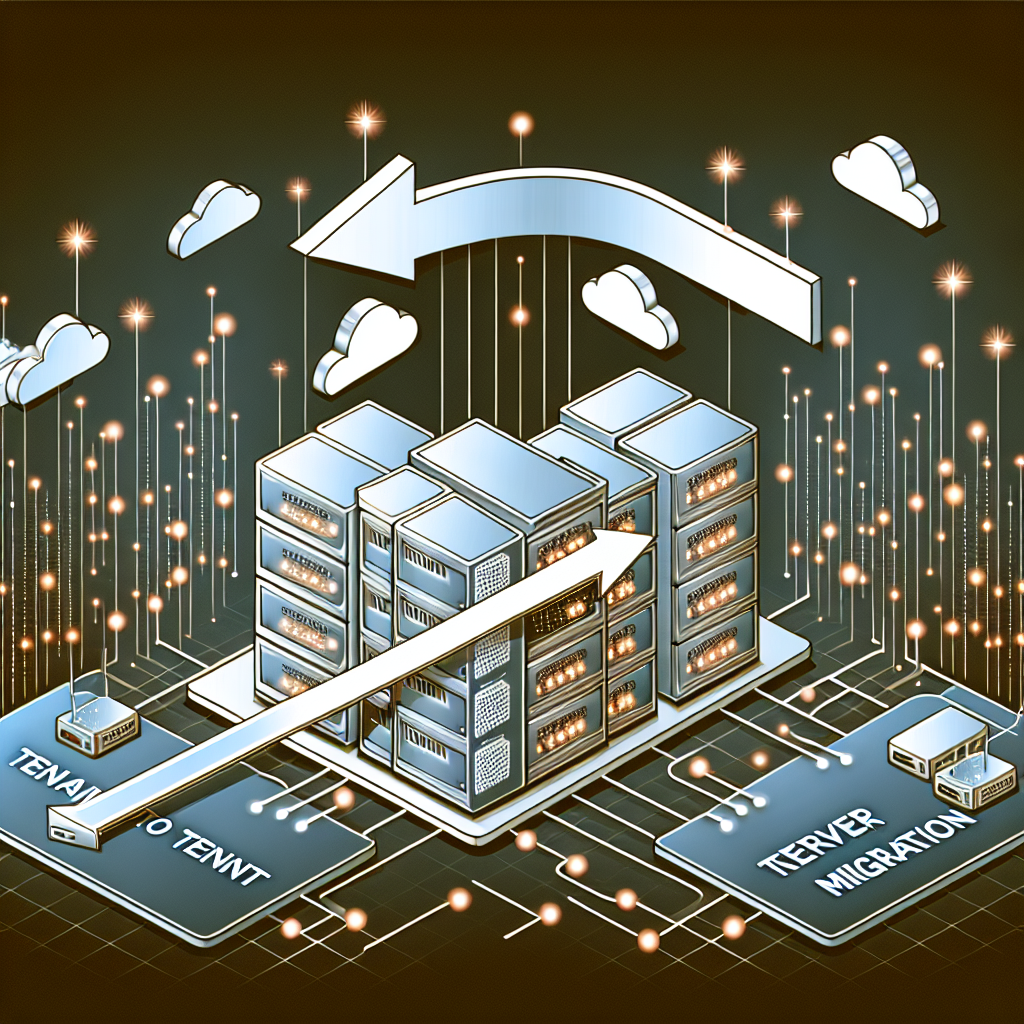Tenant to Tenant Server Migration Guide
Migrating from one tenant to another in a server environment can be a complex yet necessary process for businesses looking to optimize their cloud infrastructure. Whether you’re consolidating resources, rebranding, or transitioning to a more scalable solution, a well-planned tenant to tenant migration ensures minimal downtime and data integrity. This guide provides a step-by-step approach to executing a seamless migration while leveraging cloud migration services and best practices from top data migration companies.
Understanding Tenant to Tenant Migration
Tenant-to-tenant migration refers to the process of transferring data, applications, and configurations from one cloud tenant (a dedicated instance of a cloud environment) to another. This is common in scenarios such as:
- Mergers and acquisitions
- Organizational restructuring
- Moving from a test to a production environment
- Compliance or security policy changes
A successful migration requires careful planning, the right tools, and expertise in cloud migration strategies.
Pre-Migration Planning
1. Assess Your Current Environment
Before initiating the migration, conduct a thorough audit of your existing tenant. Identify:
- Data Volume: How much data needs to be transferred?
- Applications & Dependencies: Which apps are tenant-specific?
- User Permissions: What roles and access levels exist?
- Custom Configurations: Are there unique settings that must be preserved?
2. Choose the Right Migration Strategy
There are multiple approaches to tenant migration:
- Lift-and-Shift: Moving data as-is without modifications.
- Phased Migration: Transferring workloads in stages to minimize disruption.
- Hybrid Approach: Combining on-premises and cloud resources during transition.
Engaging a cloud migration service can help determine the best strategy for your needs.
3. Select a Data Migration Partner
If handling the migration internally seems daunting, partnering with a data migration company ensures expertise in:
- Automated migration tools
- Data validation and integrity checks
- Compliance adherence (GDPR, HIPAA, etc.)
Step-by-Step Migration Process
Step 1: Backup All Critical Data
Before making any changes, ensure a complete backup of:
- User accounts and permissions
- Databases and file storage
- Application configurations
This safeguards against data loss during transfer.
Step 2: Set Up the Target Tenant
Configure the new tenant environment to mirror (or improve upon) the original setup. Key tasks include:
- User Provisioning: Recreate necessary accounts and roles.
- Network Settings: Adjust DNS, firewalls, and security policies.
- Storage Allocation: Ensure sufficient space for incoming data.
Step 3: Migrate Data Using Cloud Migration Tools
Leverage cloud migration tools such as:
- Azure AD Connect (for Microsoft environments)
- AWS Application Migration Service
- Google Cloud Migrate for Compute Engine
These tools automate much of the transfer process, reducing human error.
Step 4: Test the New Environment
Before finalizing the switch, validate:
-
- Data Integrity: Are files and databases intact?
- Application Functionality: Do apps run correctly in the new tenant?
- User Access: Can employees log in and perform tasks?
- Data Integrity: Are files and databases intact?
Step 5: Cut Over to the New Tenant
Once testing is successful, schedule the final migration during low-traffic hours. Steps include:
-
-
- Redirect Traffic: Update DNS records to point to the new tenant.
- Sync Final Changes: Capture any last-minute data updates.
- Decommission Old Tenant: Archive or shut down the original environment.
-
Post-Migration Best Practices
Monitor Performance
Post-migration, track system performance to identify:
-
-
- Latency issues
- Authentication errors
- Resource bottlenecks
-
Train Users
Ensure employees understand any new workflows or access changes introduced by the migration.
Optimize Costs
Review cloud resource usage in the new tenant and adjust allocations to avoid overspending.
Common Challenges & Solutions
Challenge 1: Data Corruption During Transfer
Solution: Use checksum validation tools to verify file integrity.
Challenge 2: Extended Downtime
Solution: Implement a phased migration to keep critical systems running.
Challenge 3: Permission Mismatches
Solution: Audit and map user roles before migration using IAM (Identity and Access Management) tools.
Why Professional Cloud Migration Services Matter
While DIY migration is possible, partnering with a data migration company like MoveBot offers:
-
-
- Expertise: Specialized knowledge of platform-specific quirks.
- Efficiency: Faster transfers with minimal downtime.
- Security: Encrypted data handling and compliance assurance.
- OnGoing Support: Even after the migration has been completed you have all the support you need.
-
Conclusion
Tenant-to-tenant migration is a strategic move that, when executed correctly, enhances operational efficiency and scalability. By following this guide—leveraging cloud migration services, meticulous planning, and robust testing—you can ensure a smooth transition. Whether you handle it internally or engage a data migration company, the key lies in preparation, execution, and post-migration optimization.
For businesses looking to future-proof their cloud infrastructure, mastering tenant migration is an invaluable skill in today’s digital landscape.
Frequently Asked Questions
-
- What is a tenant-to-tenant server migration?
A tenant-to-tenant server migration is the process of moving data, applications, and configurations from one cloud tenant (or organizational unit) to another, typically within the same cloud platform like Microsoft 365 or Azure. - Why would I need to perform a tenant-to-tenant migration?
Common reasons include company mergers, rebranding, restructuring, or separating business units. It ensures seamless transitions while maintaining data integrity and user access. - What are the key challenges in a tenant-to-tenant migration?
Challenges include data loss risks, downtime, user disruption, permission mismatches, and ensuring compatibility between source and destination tenants. - How can I ensure a smooth tenant-to-tenant migration?
Plan thoroughly, use reliable migration tools, test the process in stages, communicate changes to users, and verify data integrity post-migration.
- What is a tenant-to-tenant server migration?





